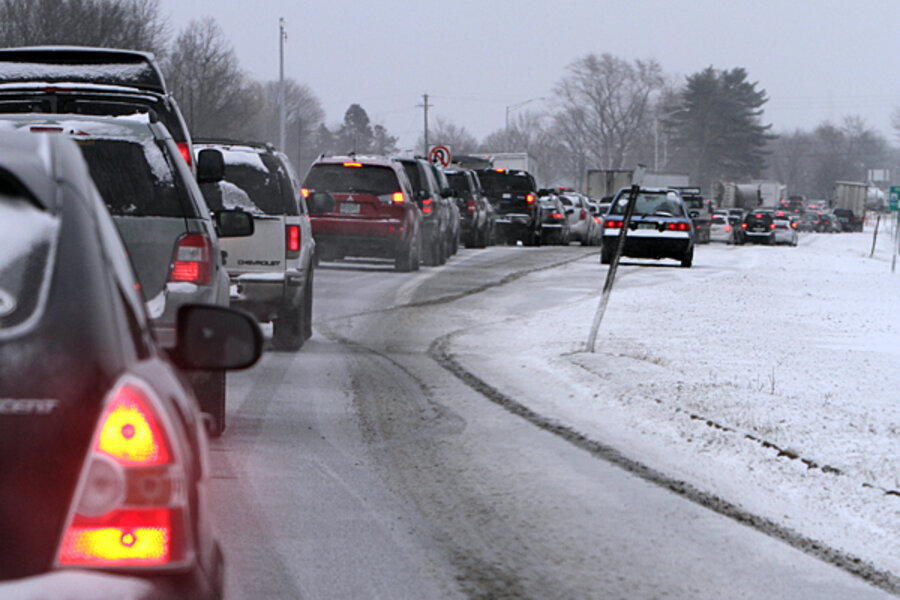Snowfall forecast for Blizzard of 2013 just got bigger. What changed?
Loading...
Overnight, predicted snowfall totals from the now-building Blizzard of 2013 jumped higher than the previous estimate, to above the two-foot mark. What happened?
A slight change in storm tracks, for one. And, as two storm systems join forces to bear down on New York and New England, cold air arriving behind one of the systems has upped the ante for snowfall.
Whereas much of the region covered by blizzard warnings had been projected to get 18 to 24 inches of snow from the storm, forecasters with the National Weather Service now are calling for more than 24 inches for much of the same region, which includes the cities of Boston, Worcester, Mass., Providence, R.I., Hartford, Conn., and Concord, N.H.
That estimate is likely to be refined further as the storms merge and the region takes the full brunt of the resulting blizzard. By 7 a.m. Eastern Standard Time Saturday, the center of the final product is projected to sit over the Atlantic Ocean southeast of Nantucket Island.
Key to the heaviest snows are features in a large winter storm dubbed snow bands -- regions within a storm typically 150 miles or more long and anywhere from 12 to 60 miles wide. Within these bands, snowfall is especially intense and can be accompanied by "thunder snow," essentially a thundershower with snow instead of rain.
But their relatively narrow form means that someone living underneath one of these bands can experience snowfall rates of 3 inches or more an hour, while someone living 20 miles away might see rates of only half an inch or so, says David R. Novak, who heads the development and training branch within the National Weather Service's Hyrdometeorological Prediction Center in College Park, Md.
Dr. Novak's forecast research has centered on these features of winter storms.
He suggests that one reason forecasters have expanded the area of heavy snow, compared with Thursday afternoon's forecast, is likely tied to the projected behavior of a snow band that is forecast to develop along a wide corridor running from Boston to Providence.
"There's always some uncertainty about where these bands are going to develop," he says, but "it looks like right around dinnertime, a nice band sets up and sits there for the evening. That's what we're worried about."
That's not all. The band may move west of its currently forecast position for a time, only to move back east later in the storm, returning to the area where it dumped snow overnight.
Because of the uncertainties involved in forecasting if, where, and when bands will form, it's difficult to figure out – even just a day in advance – what they could to do snowfall totals.
Snow-band forecasts, however, are improving, thanks largely to better forecasting models and the observing networks that feed data into the models. Those are buttressing confidence of the prognosticators.
"Two decades ago, we never would have put out a forecast of two to three feet for Boston," Novak says of snowfall forecasts.
The bands appear to need three ingredients to form. One is moisture, which is abundant in nor'easters. Another is an unstable atmosphere at altitudes of about 10,000 feet, and the third is the formation of a weather front, spawned by the storm itself, at about that same altitude. The sharper the contrast between the warm air ahead of the front and the cold air behind it, the more potent the snow band that builds -- a mesoscale band, in weatherspeak.
In the case of the looming blizzard, the cold air is coming in behind one of the two storm systems, which has been moving east across the Great Lakes region.
The temperature contrast across the front also appears to determine the number of bands, with a weaker contrast spawning more bands, Novak says. These multiband storms often show up at ground level as storms with snowfall rates that rise and fall repeatedly over time.








